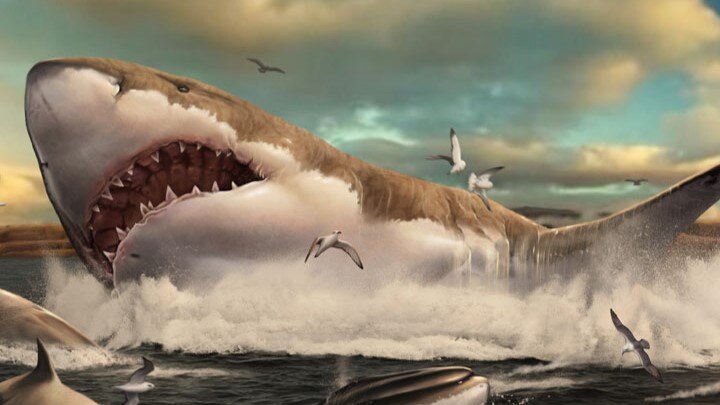A study led by the Cavanilles Institute of Biodiversity and Evolutionary Biology, located in the scientific-academic area of the University of Valencia Science Park (PCUV), reveals that the extinct megalodon and the white shark could have come to compete for trophic resources. With the analysis of dental microwear, the scientific team found similarities in the diet of both predators. The study has been published in the Spanish Journal of Palaeontology
A research team from the Cavanilles Institute of Biodiversity and Evolutionary Biology, of the scientific-academic area of the University of Valencia Science Park (PCUV), formed by María Victoria Paredes-Aliaga and José L. Herraiz, has carried out a study on the trophic interactions between the extinct giant megalodon (Otodus megalodon) and the great white shark (Carcharodon carcharias).
Published in the journal of the Spanish Society of Palaeontology, Spanish Journal of Palaeontology, the research provides new data on the possible competition for trophic resources in the past between the two species. The study focuses on the analysis of dental microwear, that is, the microscopic marks generated on the surface of teeth during food ingestion. This tool makes it possible to infer the physical and mechanical properties of the prey ingested. The wear marks on the surface of the teeth of the megalodon and the great white shark were compared. The fossil teeth analyzed, and deposited in the Paleontological Museum of Elche (MUPE), come from Neogene sites (23.3-2.58 million years ago) in the Alicante region.
The study provides additional evidence to the debate on the extinction of the megalodon, which has been attributed to both climatic changes and the emergence of new competitors, especially the appearance of the great white shark
The results reveal that, although megalodon showed a slight preference for less abrasive diets compared to the great white shark, no significant differences were found in the tooth microwear patterns of both species. This has led the research team to suggest that megalodon and great white sharks may have had similar diets, at least in the Mediterranean Sea basin during the Neogene.
The study provides additional evidence to the debate on the extinction of the megalodon, which has been attributed to both climatic changes and the emergence of new competitors, especially the appearance of the great white shark. Although the results of the work support a possible direct competition between the two sharks, Paredes-Aliaga and Herraiz stress the need for future studies that estimate the sizes of the individuals and that incorporate data from other geographic regions for a more complete understanding.
Image: Megalodon. Hugo Salais/Metazoa Studio


